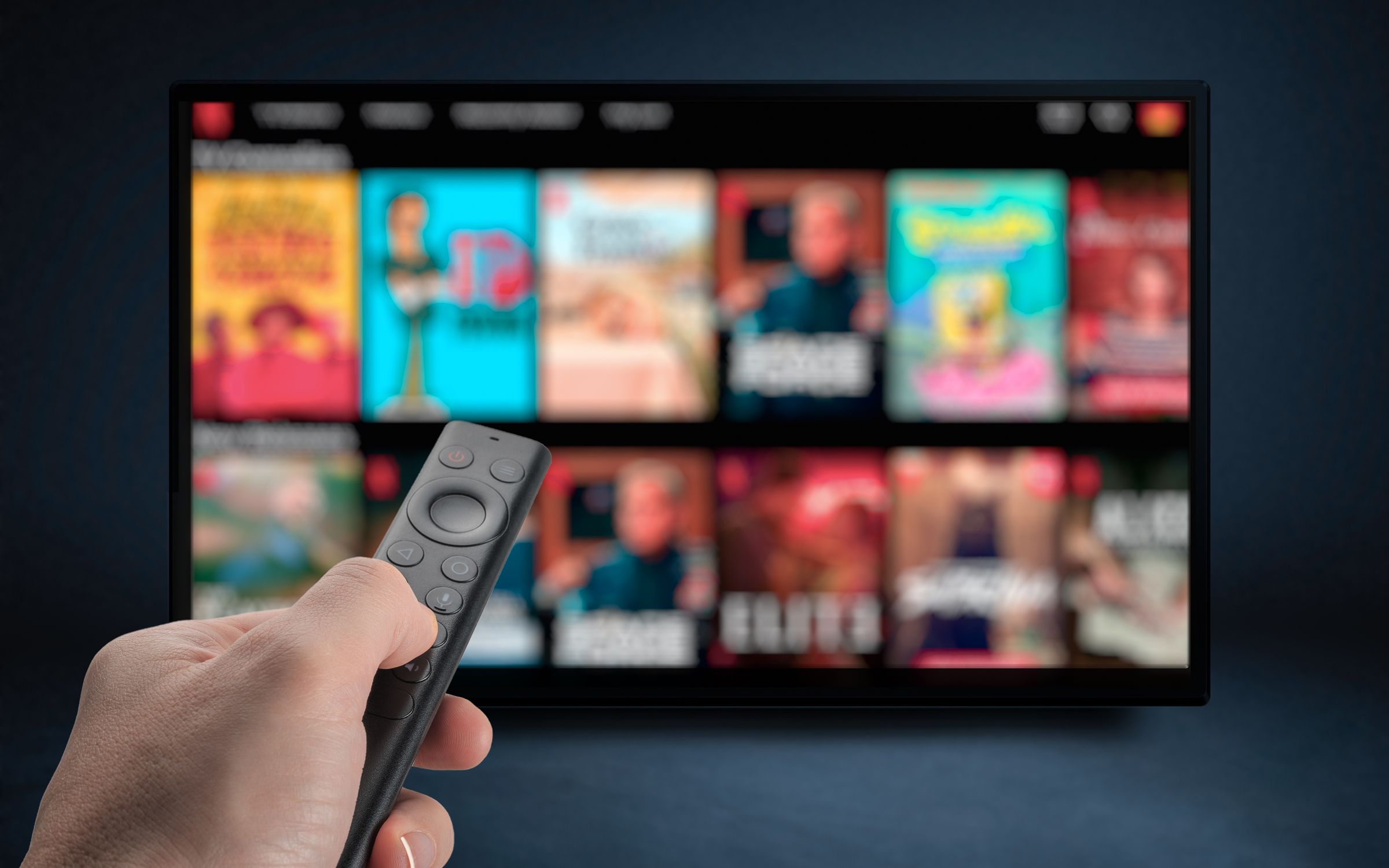Adapting to a Rapidly Changing Media Landscape
)
The only constant is change
If there’s one truth in advertising and media today, it’s this:
What worked yesterday may not work tomorrow.
Consumer attention is harder to vie for than ever. New platforms emerge overnight that you must have a presence on, while traditional channels are forced to evolve or diversify to retain relevance. Online, everyone is at the mercy of the ‘algorithm overlord’ that dictates visibility in ways we never could have predicted a decade ago. Whatever part of the sales or marketing funnel you’re in, you have to anticipate the next shift before it happens.
But we’re not here to tell you to chase every shiny new trend. Instead, it’s about building a strategy that bends without breaking.
In this Insight Bite, we’ll give you a quick rundown of this year’s ad trends (with a special focus on the rise of advertising-based video on demand) and share practical strategies to future-proof your approach.
The evolving ad trends of 2025 - and how to keep up

AI: The best or worst thing to happen to advertising
It couldn’t be a trends list without AI getting a mention. I could talk at length about the impacts of AI on the advertising world - the pros and cons to sate whichever side of the fence you fall on - but that could be an Insight Bite in its own right. For now, I’ll keep it short and sweet.
The helpful:
- Time-saving. Generative AI tools can draft dozens of ad variations in seconds. The time it saves cannot be denied. This can free marketers from grunt work and allow them to focus on things like strategy instead of repetitive tasks.
- ROI. It can help optimise campaigns in real time, adjusting bids and placements to maximise the return on investment.
- Opportunities for SMEs. Smaller companies without much budget can generate high-quality advertisements without a high-quality price tag. This helped new-to-TV brands get advertising on ITV last year.
The harmful:
- Automatic anti-AI sentiment. ‘High quality’ can be open to interpretation, and the mere use of AI can turn people away. A Forbes article stated that half of consumers are put off by AI ads and claim that it undermines brand authenticity.
- Impacts on the workforce. Using AI to create ads also eliminates jobs for creatives, including those in animation, television production, graphic design, and more.
- Loss of human touch. Over-reliance on AI risks producing bland, generic messaging that fails to resonate with consumers, as AI-generated content can ultimately feel impersonal and lack the ability to build emotional connections.
Ultimately, advertisers need to balance automation with human insight, using AI as a tool, not a crutch.
Personalisation: An advertising paradox
It’s a delicate line to walk nowadays between ‘invasive’ and ‘relevant’ adverts. Consumers want the latter but are turned off if they label it as the former. In fact, a SmarterHQ report found that 63% of consumers would stop purchasing products altogether from companies that do “creepy marketing.” That’s an insanely high rate of people who could see the advertisement you think is perfectly targeted and highly relevant - and turn against it for those very reasons.
And what is “creepy” marketing, anyway? According to the report, some of the worst offenders are websites that use AI chatbot popups, push notifications suggesting products based on purchase history, and adverts featuring brands previously viewed.
It’s the kind of dilemma that keeps marketers up at night: how do you deliver personalised experiences without overstepping privacy boundaries?
So what works instead?
- First-party data. Quizzes, polls, and gated content allow brands to collect insights directly from consumers with their explicit consent.
- Contextual targeting. Placing ads alongside relevant content (like a running shoe ad in a fitness newsletter) feels natural rather than intrusive.
- Strategic partnerships. Co-branded campaigns with trusted publishers or influencers can deliver reach without relying on invasive data practices. And speaking of influencers…
Influencers: Micro vs macro
While the use of high-profile brand ambassadors on prime-time TV spots isn’t on its way out - and probably never will be - many brands try to capitalise on online influencer virality and popularity to get their products and services across.
But the era of shelling out the big bucks for a post or two and hoping for the best seems to be over, as according to an Aspire report, 64% of marketers prefer working with nano and micro-influencers over the bigger names.
There are a lot of reasons for this:
- Lower cost. At the end of the day, you pay for access to audience size, so working with those who have a smaller follower count will cost less.
- Higher engagement. But a smaller audience doesn’t mean less traction - quite the opposite. These micro-influencers consistently drive higher engagement, as their communities are more loyal. That means more conversations, more interactions, and more attention on your product.
- Trust. Niche audiences trust these smaller influencers more to recommend genuinely good products and services - ones they actually care about and use themselves. It feels more like a friend offering a recommendation than a corporately sponsored celebrity.
But now we come to the main event of this year’s ad trends…
The rise of AVOD (advertising-based video on demand)

The death of linear TV (and what replaced it)
Remember when “prime time” meant 8 o’clock on ITV? For the crucial 16-34 demographic, those days are numbered. Ofcom reported in 2024 that only 48% of them watch live TV each week. The rest have migrated to on-demand and digital platforms.
Moreover, it’s estimated that over 19 million of the 28.4 million households had a streaming service subscription.
Because of this, the streaming wars are hotter than ever. Netflix, Amazon Prime, Disney, and Apple continue to dominate, while smaller niche streaming services fight for market attention. But while in previous years the story would focus on who the current leader was in this category, now it’s all about the rise of ad-supported subscription tiers and how they’re affecting performance, revenue and retention.
With cost-conscious consumers resisting price hikes, platforms now offer hybrid models. Ultimately, customers are paying the same (if not slightly less) for a service worse than what they’re used to, but this is game-changing for streaming companies.
The major players in AVOD
- Netflix. 55% of new Netflix subscribers in Q4 of 2024 signed up for the ad-supported tier. Netflix co-CEO Greg Peters said that serving advertisers “is going to remain a priority and part of our road map for years to come”.
- Disney+. On the Disney Advertising press page, Disney highlights advanced audience targeting, programmatic expansion, and a variety of ad formats available to brand partners, while noting that 50% of new Disney+ subscribers are choosing the ad-supported plan.
- Amazon Prime. Unlike the aforementioned brands, Amazon defaulted all existing Prime users to its ad-supported tier. As such, it’s estimated that over 90% of UK Prime users are on the default ad tier. Interestingly, according to the 2024 Amazon Upfront, 52% of Prime Video viewers do not watch any paid linear TV in the UK.
- Apple. Currently, the only major player not showing ads is Apple. But with peers like Netflix doubling its ad revenue last year - and expecting to do the same this year - how long can Apple hold out before giving in to the trend?
What this means for advertisers
- Premium inventory, prime audiences. As the younger, digitally native audience trades linear TV for a streaming service, advertisers are able to reach them in premium environments that were previously ad-free. While binging the latest Netflix series, viewers are now a captive audience to brand messaging.
- Increased targeting and measurability. Unlike traditional TV ad placements, AVOD platforms can utilise first-party data and invest in programmatic tools to deliver more targeted advertisements.
- More supply, more competition. With more inventory available, CPMs may stabilise or even drop in certain categories, but competition for attention will always remain fierce.
How to adapt without burning out

Invest in ‘always-on’ intelligence
Anticipating will always succeed over reacting. In practice, that means:
- Keeping track of the best ad platforms. There has been a mass exodus of advertisers from Twitter as of late. A Kantar study stated that 26% of surveyed brands plan to cut spending on the platform due to concerns about its content and trust in the information disseminated. On the other hand, many brands are now making their presence known on TikTok Shop, with Lidl’s protein products launch on the platform selling out in under 20 minutes.
- Monitoring competitor moves closely. Who’s testing TikTok Shop ads? Which brands are shifting budgets from Twitter to Facebook? Is one of your rivals planning a new TV ad campaign? These insights can help inform your own strategy.
- Leveraging data tools to spot shifts early. The most agile teams use market intelligence platforms to see which brands are increasing ad spend or reviewing agency partnerships before their competitors do.
Pro-tip: That’s where a platform like ALF Insight can make all the difference. It gives you access to thousands of company profiles, plus real-time alerts on account moves, job changes, and ad spend trends.
Test fast, fail small, scale faster
Don’t resort to the ‘spray and pray’ approach. It’s a trap we’ve all fallen into as marketers, but it rarely has the success you want. In its place, adopt a more surgical approach:
- Pilot new channels with 10% of budget. Whether it’s Reddit ads, podcast sponsorships, or experimental platforms like Discord communities, small bets allow for learning without major risk.
- The 10% figure comes from ex-Google CEO’s 70-20-10 approach to innovation and how to allocate resources and time to projects. Focus 70% on improving core products, 20% on related projects, and 10% on disruptive new ideas. This strategy is used by some of the biggest companies in the world, such as Google and Coca-Cola, and you can read more about it here.
- Measure incrementality rigorously. The numbers don’t lie. You need to know: did that TikTok campaign actually drive new sales, or did it just cannibalise existing traffic? Proper attribution and UTM tracking are key.
- Kill what doesn’t work and double down on what does. The ability to pivot quickly separates winners from stragglers. Use your campaign metrics to identify where your successes come from, and cut what’s not working. Not every idea is a winner, and that’s okay.
Be flexible
Rigid annual media plans are obsolete. In a landscape this volatile, flexibility is non-negotiable.
- Adopt real-time optimisation tools. Platforms like Google Performance Max and Meta’s Advantage+ automate bid adjustments and creative rotations, letting algorithms handle micro-changes while your team focuses on strategy.
- Use rolling forecasts instead of annual plans. While it’s good to have long-term plans and stick to them, stubbornly following what you planned eight months ago just because it’s in the annual plan will shoot you in the foot. Quarterly reviews allow for adjustments based on real-world performance and emerging trends.
- Empower teams to pivot quickly. Hierarchical approval processes that take weeks will leave you behind. Agile decision-making is a must. Give your team some freedom. Trust them and their skills. You hired them for a reason.
Conclusion
We’ve covered a lot of ground in this Insight Bite, and each section could easily be its own deep dive. Our goal here is to give you a clear overview and spark some ideas for your next moves.
The bottom line is this: the media landscape is evolving almost faster than we can keep up. But that’s the thing - almost. It’s not impossible to overcome.
The brands that win will:
- Use the right market intelligence platforms
- Test quickly, learn fast, and scale what works while cutting losses early
- Build flexibility into their process
If you do this, you’re not going to get left behind.
My advice? Prioritise that market intelligence platform. Here are a few names that use ALF to stay ahead in the tumultuous world of advertising…

Book a demo with ALF Insight to see how we can help your business too.



